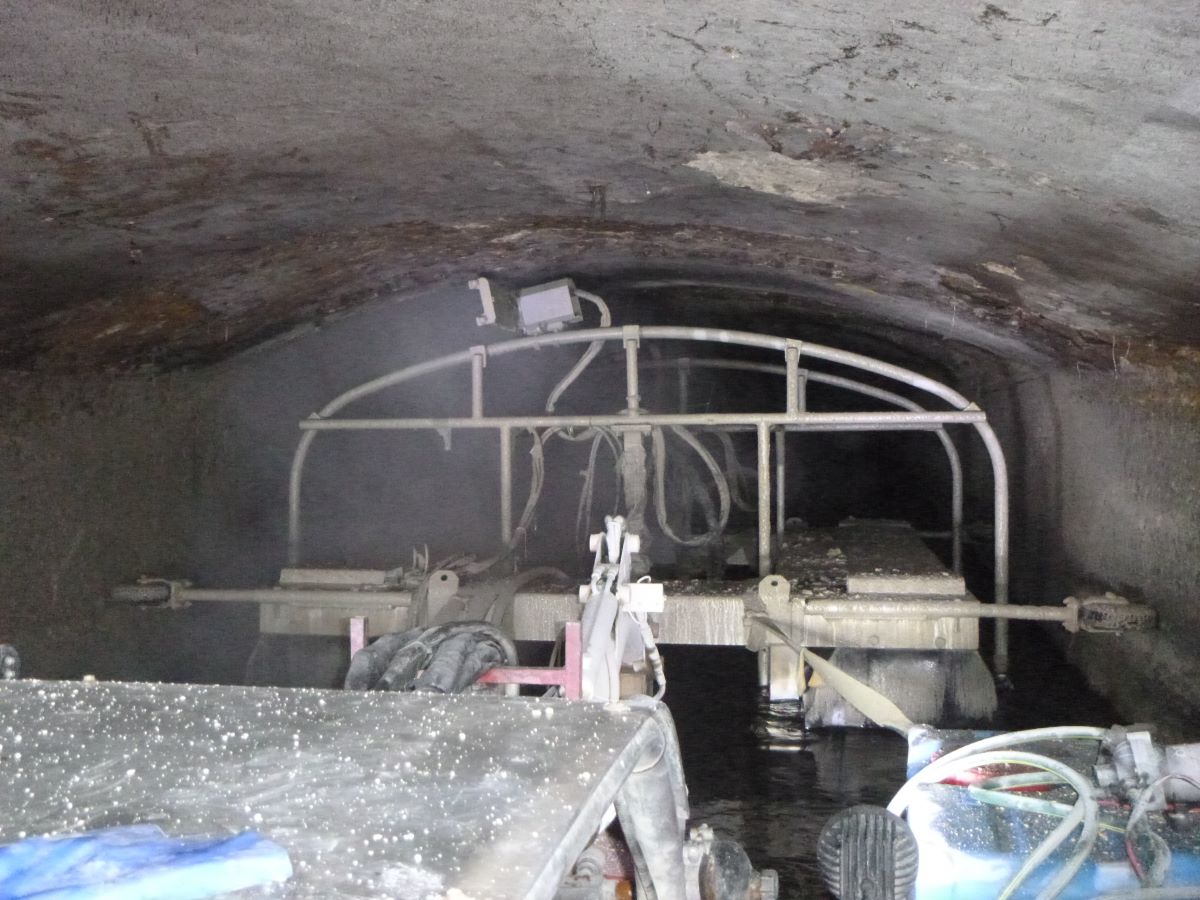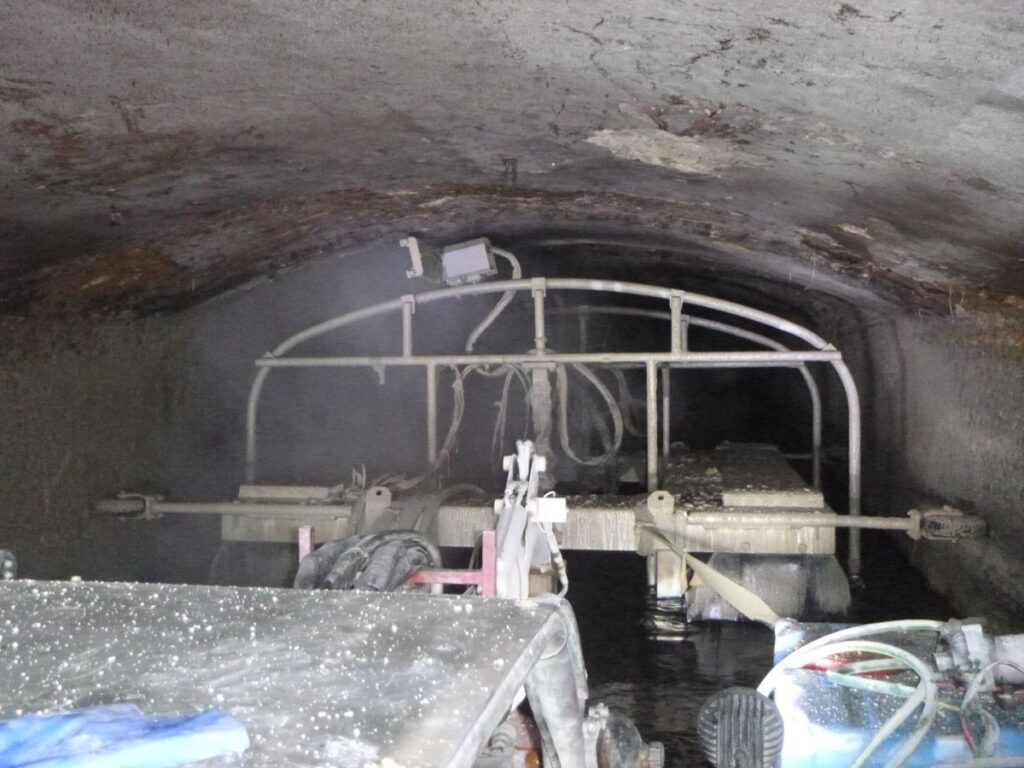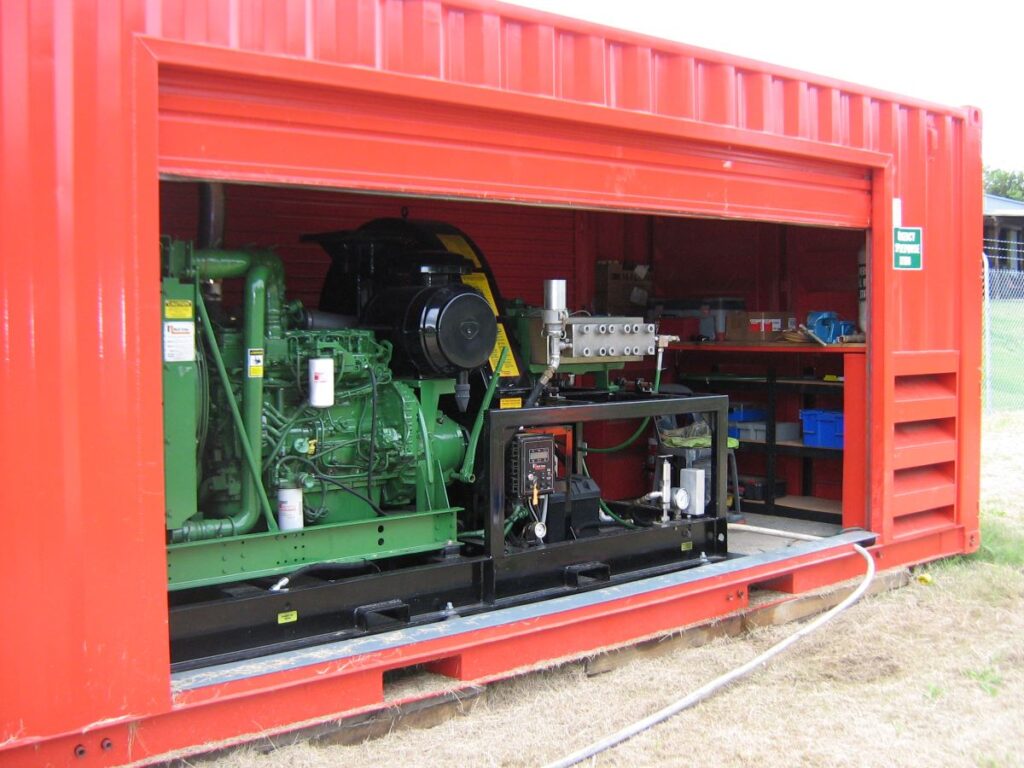
Revolutionising Concrete Infrastructure Maintenance Through Innovation
Introduction
Metrocorp has adopted, invested in and refined advanced technologies to meet the unique challenges of concrete repair. This case study highlights how our innovative approach to concrete preparation sets us apart, offering clients unparalleled safety, efficiency and environmental sustainability.
The Challenge
The preparation of concrete tunnels for remediation presents distinct challenges. These structures are often degraded by corrosive elements such as sulphuric acid, a byproduct of hydrogen sulphide gas present in urban and industrial wastewater environments. Traditional manual methods of high-pressure blasting posed significant safety risks and were prone to inconsistencies, demanding a more controlled and efficient approach that is also environmentally more sustainable.

Solution
Traditional high-pressure blasting systems are managed by a team using Ultra High Pressure (UHP) water blasters. These blasters are operated by teams working in tunnels.
To eliminate the need for human operators to be in the direct line of high-pressure discharges, we introduced automated high-pressure blasting systems. To achieve this, we started by implementing a two-phase innovation strategy to revolutionise tunnel surface preparation.
Phase 1: Automating High-Pressure Blasting
We customised a hydro-demolition robot to automate the cleaning and preparation of tunnel surfaces. This robot was adapted to operate autonomously, mounted on a system of motorised pontoons designed to navigate the cylindrical tunnel space effectively. The robotic system was engineered to withstand harsh environmental conditions and debris, reducing the need for human intervention and enhancing the uniformity of the surface treatment.
Phase 2: The Rock Wheel Adaptation
To further enhance our surface preparation techniques, we adapted the Rock Wheel system for use in concrete tunnels. Originally used for more straightforward excavation tasks, the Rock Wheel was modified to work from a floating platform, equipped with rotational capabilities to ensure comprehensive coverage of the tunnel’s curved surfaces. This innovation significantly reduced the use of water and diesel, aligning with our goals for environmental sustainability and reducing the physical footprint of our operations.

Outcome
The deployment of these cutting-edge technologies has transformed the way we approach concrete tunnel remediation:
- Enhanced Safety and Consistency: The automation of surface preparation tasks has significantly minimised safety hazards associated with high-pressure operations, while ensuring a consistent quality of surface treatment across extensive tunnel sections.
- Reduced Environmental Impact: By eliminating water use and reducing diesel consumption, our methods have set new standards for environmental responsibility in tunnel remediation. Our innovation has reduced the use of diesel by 150 litres / day and water usage from 36,000 litres / week to no water required.
- Superior Efficiency: These technological enhancements have streamlined our operations, allowing us to complete projects faster and with fewer resources, thereby reducing overall project costs.
Conclusion
Our dedication to innovation in concrete remediation not only enhances the structural integrity and longevity of these crucial infrastructures but also underscores our commitment to safety and environmental sustainability.
By continuously advancing our technology and techniques, we provide our clients with superior solutions than competitors. This enables us to access, inspect, and repair critical infrastructure, no matter where or how hard.
Our approach to tunnel remediation exemplifies our broader commitment to leading the industry with smart, safe and sustainable solutions.